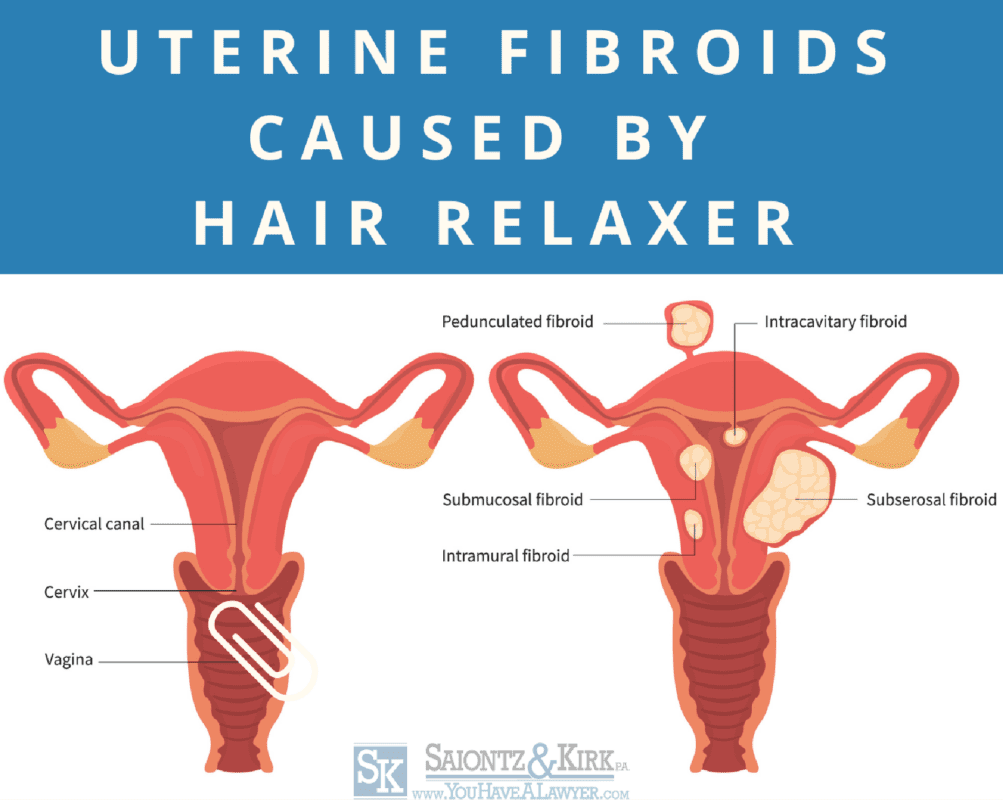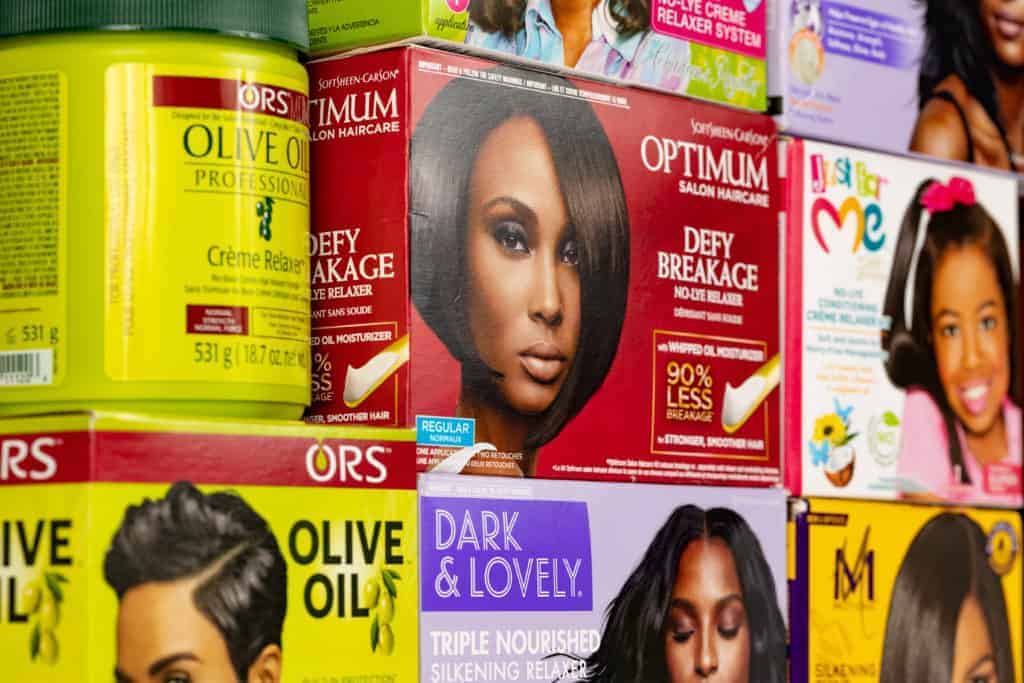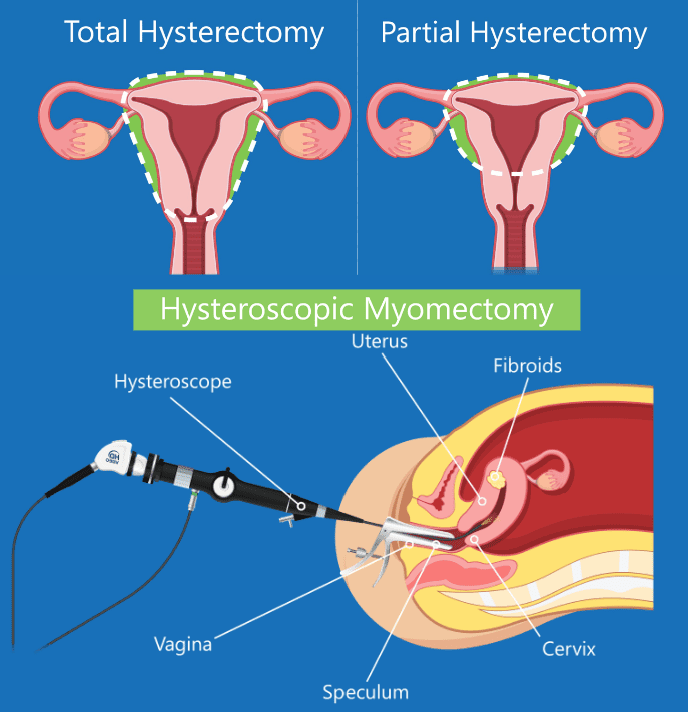Do Chemical Hair Relaxers Cause Uterine Fibroids?
While a growing amount of medical research has highlighted hair relaxer cancer risks, similar findings have identified that hormone disrupting chemicals used in hair relaxers increase uterine fibroid risks.
The risk and severity of uterine fibroids becomes even greater when women are frequently exposed to chemical hair relaxer products for years. Below we will take a look at how frequent hair relaxer use can cause uterine fibroids, and the potential reproductive problems that can arise.
How Do Relaxers Cause Fibroids?
Hair relaxers contain toxic endocrine disrupting chemicals (EDCs), such as phthalates, DEHP and others. These straightening chemicals are used to make the relaxers and perm products absorb into the hair and improve texture.
EDC’s have been found to mimic the female sex hormones, and trick the body into thinking that they are natural estrogen and progesterone. This causes an imbalance of natural hormones in the body, which can lead to inflammation and DNA damage to uterine cells.
Research has found that this type of damage and changes in structure to cells in the uterus can promote the growth of both cancerous and noncancerous tumors, such as uterine fibroids.
Hair Relaxer Chemicals Amplify Fibroid Growth
Uterine fibroids are non-cancerous tumors made up of smooth muscle cells and fibrous tissue that develop in the uterus. Research has found that EDC’s in hair relaxers not only cause cell disruptions that form the fibroids, but also amplify their growth.
How? Because the cells that fibroids are made of contain more hormone receptors than typical uterine muscle cells. This allows for more of the endocrine disrupting chemicals mimicking estrogen to bind to these receptors, accelerating the growth of multiple types of fibroids.

Hair Relaxers and Increased Fibroid Risks for African American Women
Hair relaxers containing undisclosed hormone disrupting chemicals have been predominantly advertised to African American women and children for decades.
Several studies have suggested that the frequent use of hair relaxers may be the reason why African American women are three times more likely to develop fibroids when compared to white women.
Studies have also shown black women are also more likely to develop uterine fibroids at an earlier age, and experience more severe symptoms.
Which hair relaxer products may cause uterine fibroids?
Hair relaxer lawsuits are being filed against the manufacturers of the following brands of relaxer for their failure to warn or disclose the risks of uterine fibroids.
- Dark and Lovely
- Just for Me
- Soft & Beautiful
- ORS Olive Oil
- TCB Naturals
- Motions
- African Pride
- Dream Kids Olive Oil Miracle
- Creme of Nature
- Optimum Salon Haircare

Link Between Hair Relaxers and Uterine Fibroids
While recent studies have identified ovarian cancer and uterine cancer risks from hair relaxer, a study published back in 2012 identified a potential link between increased hair relaxer use and uterine fibroid diagnosis.
Black Women’s Health Study Links Hair Relaxers and Fibroids: 2012 Study
In a study published in the American Journal of Epidemiology in 2012, researchers of the Black Women’s Health Study collected data on 23,580 premenopausal African American women between the ages of 21 and 69 years of age who used hair relaxer.
From 1997 through 2009, authors collected data every two years on the participants use of hair relaxers, including age at first use, frequency, duration, number of scalp burns, and type of hair relaxer used.
According to the findings, women who reported any hair relaxer use were 1.17x more at risk of developing uterine fibroids when compared to those never using the products.
The study found a correlation between increased hair relaxer use and uterine fibroids among participants. When comparing women who only used hair relaxer 1 – 2 times per year to those with more frequent use, researchers found
- 3 – 4 Relaxer Treatments Annually = 1.04x risk
- 5 – 6 Relaxer Treatments Annually = 1.12x risk
- 7 or Relaxer More Treatments Annually = 1.15x risk
Researchers also found an increased rate of uterine fibroids among women based on their;
- Number of years using hair relaxer
- Number of scalp burns from hair relaxers
Hair Relaxer and Uterine Fibroid Side Effects
In addition to hair relaxer uterine cancer risks and uterine fibroid risks, women frequently exposed to hair relaxers may be at increased risk of reproductive problems from uterine complications.
Reproductive Problems From Uterine Fibroids
Uterine fibroids can cause reproductive problems depending on the size and location of the fibroids. Some of the reproductive problems that can be caused by uterine fibroids include:
Infertility: If the fibroids are located in the lining of the uterus or near the fallopian tubes, they can interfere with fertilization and implantation of a fertilized egg.
Miscarriage: Fibroids can also increase the risk of miscarriage in pregnant women. The risk is higher if the fibroids are located near the cervix or if they are very large.
Preterm labor: Women with fibroids are at an increased risk of going into preterm labor, which can result in premature delivery.
Difficulty conceiving: Fibroids can also make it more difficult for a woman to conceive. If the fibroids are large, they can distort the shape of the uterus, which can make it difficult for sperm to reach the egg.
Uterine Fibroids and Anemia
Several hair relaxer lawsuits over uterine fibroids developed from perm and relaxer products have included allegations that the injury also caused women to develop anemia.
Uterine fibroids can cause anemia because they result in uterus growth and heavy menstrual bleeding. The bleeding can be heavy enough to deplete the body’s iron stores, which can result in anemia.
Symptoms of Fibroids
- Backache or leg pains
- Constipation
- Difficulty emptying the bladder
- Frequent urination
- Pelvic pressure or pain
- Menstrual periods lasting more than a week
- Heavy menstrual bleeding
Surgical Removal of Fibroids
Unfortunately, many women who have used hair relaxers their entire life have developed uterine fibroids that require surgical removal. For some, this can result in the loss of ability to have children.
Total Hysterectomy: A total hysterectomy is a surgical procedure that only removes the uterus and the fibroid(s).
It is a treatment option that is recommended for women who have large or several uterine fibroids that are causing significant symptoms or complications, such as heavy bleeding, pelvic pain, or pressure on other organs.
Since a hysterectomy removes the uterus, women will no longer be able to have children.
Partial Hysterectomy: A partial hysterectomy, also known as a subtotal hysterectomy, is a surgical procedure that involves the removal of the upper part of the uterus. Depending on the location of the fibroids the cervix and ovaries may be left intact.
Partial hysterectomy’s are recommended for women with fibroids causing pain and complications, but wish to preserve their cervix and ovaries for fertility and hormonal reasons.
While it is still possible to conceive a child after a partial hysterectomy as long as the cervix and at least one ovary remain intact, a partial hysterectomy can significantly affect a woman’s fertility and ability to carry a pregnancy to term.
Myomectomy: A myomectomy is a surgical procedure that removes uterine fibroids while leaving the rest of the uterus, cervix ovaries and fallopian tubes in tact.
This procedure is typically preferred and is performed on women who have symptomatic fibroids, which can cause heavy menstrual bleeding, pelvic pain or pressure, urinary frequency and other related symptoms.
For women of child bearing age, a myomectomy is typically the best option for removing fibroids. However, fibroids have been found to regrow after a myomectomy.

Can Uterine Fibroids Be Cancerous?
While there is strong evidence linking hair relaxer and ovarian cancer, uterine fibroids themselves are non-cancerous (benign) tumors.
Is There a Hair Relaxer Lawsuit for Uterine Fibroids
Yes. The product liability lawyers at Saiontz & Kirk, P.A. represent women in hair relaxer lawsuits who have been diagnosed with uterine fibroids that required surgical removal.
Hair Relaxer Uterine Fibroids Settlements
Early in the litigation, the manufacturers have maintained that they will not voluntarily offer hair relaxer settlements for uterine fibroids or other injuries claimed in the lawsuits. However, as discovery moves forward and individual cases go before juries, our lawyers expect that stance will change and women will have an opportunity to settle their claim for uterine cancer, ovarian cancer or uterine fibroids caused by hair relaxers.
Since February 2023, all hair relaxer cancer lawsuits and uterine fibroid lawsuits have been consolidated and centralized before Judge Mary M. Rowland in the U.S. District Court for the Northern District of Illinois, as part of a federal MDL or multidistrict litigation. As part of the coordinated pretrial proceedings, it is expected that a series of early bellwether trials will be scheduled involving different types of injuries caused by hair relaxers and perms, to gauge how juries are likely to respond to certain evidence and testimony that may be repeated throughout the claims.
Depending on the outcomes of the bellwether trials and any hair relaxer lawsuit payouts awarded by juries, the manufacturers may agree to a hair relaxer settlement structure that establishes different tiers of compensation based on the severity of the plaintiffs’ injuries. At this time, no injury tier structure has been established, but the individual circumstances surrounding each case and how the uterine fibroid injury impacted each woman will impact the amount of any individual settlement that may eventually be offered.
How To File A Hair Relaxer Uterine Fibroid Lawsuit
To file a hair relaxer uterine fibroid lawsuit, the first step is to contact our attorneys for a free consultation. Our product liability lawyers will explain your legal rights and handle filing your hair relaxer lawsuit for you.
Our lawyers are investigating lawsuits against hair relaxer manufacturers for individuals who frequently used the products and developed any of the following conditions;
- Uterine Fibroids (resulting in hysterectomy or myomectomy)
- Uterine Cancer
- Ovarian Cancer
To find out if you or a loved one may be entitled to financial compensation through a hair relaxer lawsuit payout, call our office toll-free at 800-522-0102 or request a free consultation.
